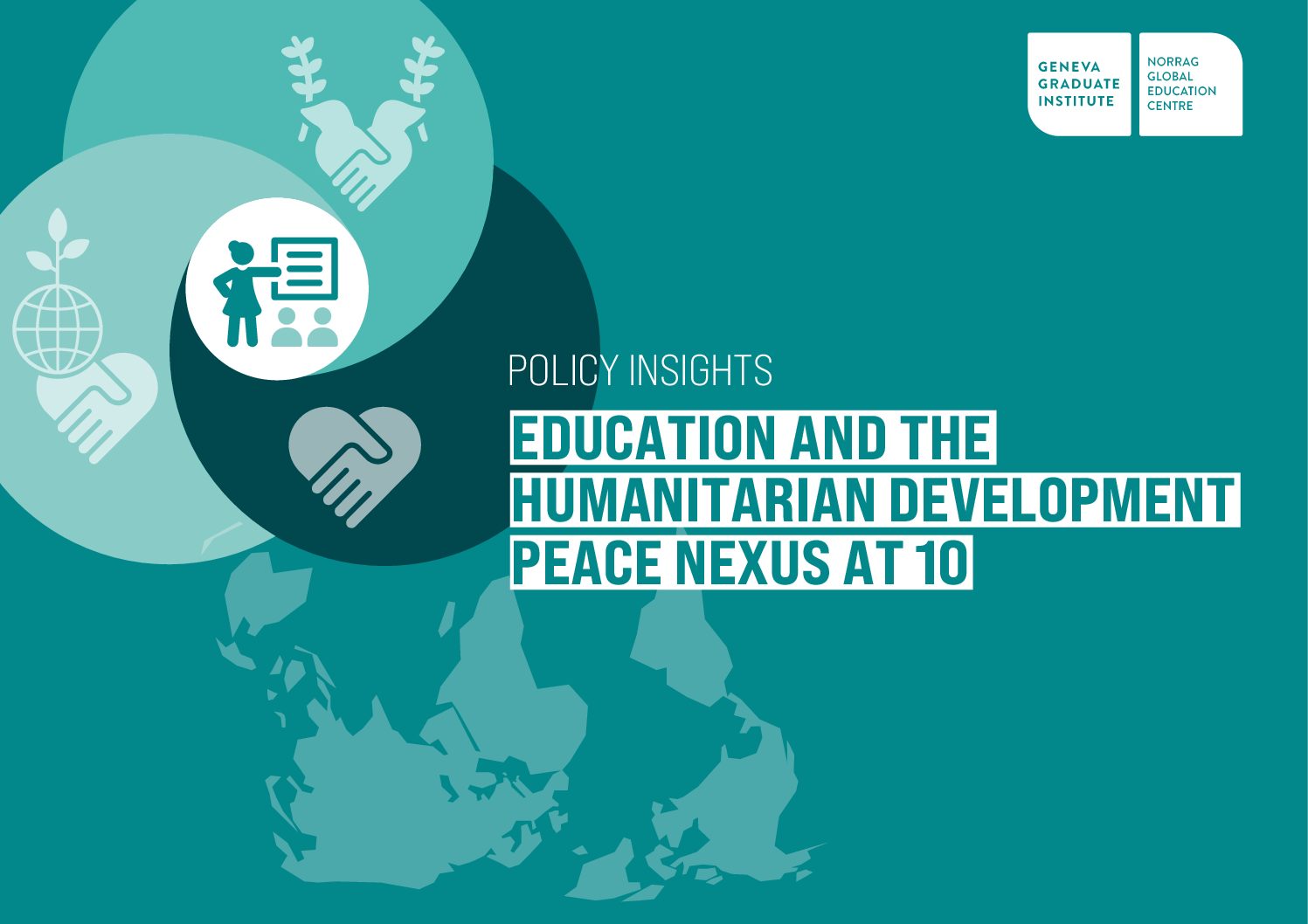Education and the Humanitarian-Development-Peace Nexus at 10
14:00 – 16:30 CET
Online (Zoom)
This NORRAG Policy Insights collection examines how the features of the Humanitarian- Development-Peace (HDP) Nexus can inform, and have informed, education in emergencies (EiE) programming. Bringing together over 40 contributions from more than 100 authors from diverse geographies, half of whom are from the Global South, the publication offers rich perspectives on successes and challenges in making a reality of a nexus approach. It takes account of the impact of dramatic funding cuts in international aid during 2025, and aligns with new directions set by the Inter-agency Network for Education in Emergencies (INEE) which supports quality, safe, and relevant education for all persons affected by emergencies as it marks its 25th anniversary.
Despite numerous policy reforms and initiatives in the 10 years since the term Humanitarian- Development-Peace (HDP) Nexus was coined at the World Humanitarian Summit in 2016, the practical implementation of the HDP Nexus continues to face challenges. Persistent funding silos, duplication and competition among actors, and limited coordination across sectors have hindered its full potential. The education sector reveals the complexity of integrating emergency response, long-term development, and peacebuilding efforts. Against this backdrop, this collection compiles critical insights, lessons learned, and innovative approaches from a range of education actors committed to applying a nexus approach in emergency and protracted crisis contexts.
Contributors each make recommendations in the form of ‘key takeaways’, for how the application of nexus thinking can be strengthened. They highlight the need to advance local leadership, critically including by teachers, learners and communities, for contextually appropriate solutions, supported by flexible, equitably distributed financing, and coherent coordination in crisis-affected contexts.
The collection is structured around key thematic areas that shed light on how education actors can operationalise the Nexus across humanitarian, development, and peace domains:
- Taking stock, assessing the current status and relevance of the Nexus framework in education and aid, examining coherence, financing models, and lessons learned from Nexus engagement in crisis contexts.
- Centring humanity focuses on reimagining education centred on human well-being, with examples from psychosocial support, social and emotional learning (SEL), and localised systems to build community and social resilience across the Triple Nexus.
- Teaching at the heart of the nexus explores the crucial role of teachers as frontline agents in operationalising the Humanitarian-Development-Peace Nexus by emphasising their professional development, agency, well-being, and central function in building a just peace.
- Leading locally examines the necessity of shifting power to local leadership and ownership in Nexus implementation, focusing on empowering community actors, integrating community and national systems, and addressing structural barriers to funding and coordination.
- Making the connections focuses on strengthening coherence and coordination of relevant actors across the Nexus, examining lessons from coordinating bodies, integrating child protection with education, bridging evidence systems, and advancing anticipatory action.
This publication foregrounds the necessity of putting local leadership, social justice, and humanity at the centre of Nexus decision-making and implementation in education. Together, the insights presented provide a vital reflection on a decade of practice and a roadmap for a more coherent, inclusive, and sustainable future for the provision of inclusive, quality education in crisis and beyond.

